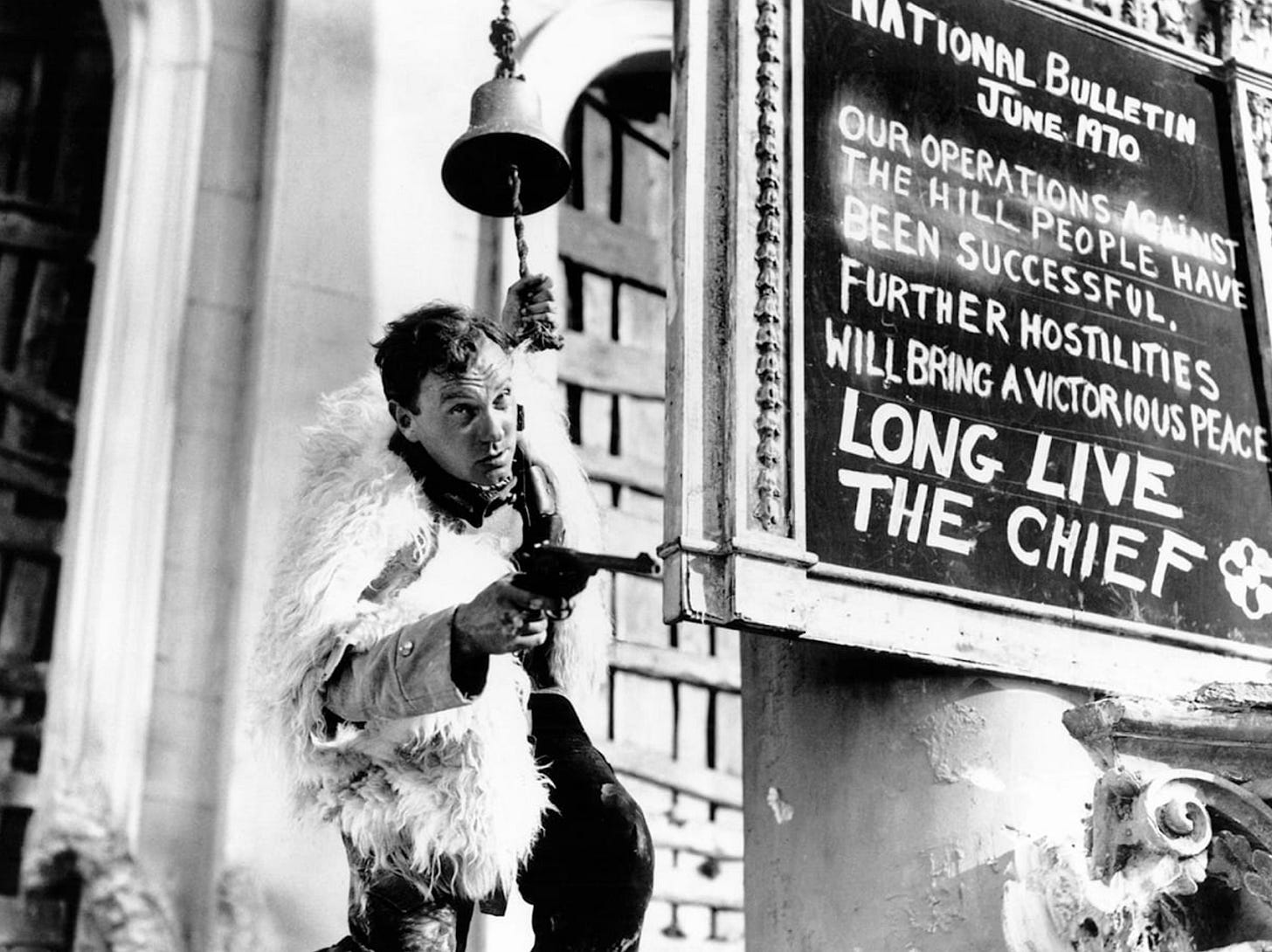Things to Come
War of the World
Have you ever wondered what people one hundred years ago imagined what the future would be like? Things to Come (1936) will save you the trouble! It’s impossible to look away from purely because you can grade the predictions of H.G. Wells in real-time. The film was made in 1936, based on Wells’ novel from 1933, and begins with an eerie prescience as the citizens of Everytown—a fictional stand-in for England—prepare for Christmas (that’s right, your hunt for the perfect holiday film is over) against the backdrop of political tensions. “Political tensions? In 1936?” --You might be asking. Hitler isn’t mentioned by name in the film; it is far more chilling that major studio movies like this already regarded “him” (as he is referred to in the film) as some sort of other-worldly threat. In 1936, Hitler’s Germany had yet to annex a neighbor, but as we know now, Hitler was laying the groundwork and making his intentions clear to his inner circle. Clearly, Wells was no fan of Neville Chamberlain’s appeasement of the time, as the first twenty minutes of the film, set in 1940, show characters reveling on Christmas with varying degrees of anxiety over the potential for war. Then comes minute 21, and the movie shows its prescience when all hell breaks loose. Things to Come takes a sweeping, ambitious look at the trajectory of human civilization over a century. It’s a grand vision of war, collapse, and eventual renewal, all underscored by Wells’ hopeful belief in progress.
However, underlying Wells’ belief in progress is a cynicism that shines spectacularly in the movie. For as on-the-nose as Wells is in the first act, and he truly does nail what was coming down the pike, he is, thankfully, wrong in the second act, when the film jumps ahead to 1966. I won’t spoil it.
The heart of Things to Come lies in its speculative nature. As the film progresses, we see Everytown transformed: first ravaged by war, then ruled by despotic warlords, and finally, in a 2036-set third act, uplifted by a technocratic elite who believe in the power of science and reason, though not without their detractors. Wells’ cynicism can be read as a hopeful warning, but when considering the period he was living in when writing this, it’s possible he had his doubts.
The production design by Vincent Korda is one of the film’s standout features. The futuristic cityscapes, sprawling underground complexes, and space-gun (!) are awe-inspiring, especially for a film made in the 1930s. The art deco aesthetic and clever special effects by Ned Mann give the film visual grandeur that makes it, for my money, a retroactive stoner masterpiece. The towering sets and meticulous miniatures show off Menzies’s skill as a director and designer. (Check out Invaders from Mars (1953)).
Some things that have aged poorly: The film’s reliance on didactic dialogue can feel heavy-handed, with characters often serving as mouthpieces for Wells’ ideals rather than fully fleshed-out individuals. It doesn’t take away from the overall impact, especially today as it blends into something like ‘period,’ but you’ll still know it when you hear it. One thing, in two words, that has aged incredibly well: Space gun. Did I already mention there’s a space gun in this movie? Movie’s words, not mine. A guy shoots his kids out of it so that humanity can continue to progress. It makes sense when you watch it. I have no idea how they’re going to get back or what they’re going to do when they get there, other than sippin’ on sweet sweet moon juice, but that’s progress baby!
Ahem. The film’s seeming belief that humanity can overcome its baser instincts to create a better future feels particularly poignant and needed today. It’s a big, bold, ambitious tale that aims to make a difference. It’s the kind of art you love to see. As Tom Stoppard said in The Real Thing (1982), and I’m paraphrasing: Words are sacred. If you get the right ones in the right order, you might nudge the world.
Things to Come
Written by H.G. Wells; Directed by William Cameron Menzies
1936
100 minutes
English
Recommended way to watch (at time of publication): Streaming on The Criterion Channel
You’ll like this if you like: Metropolis (1927), Megalopolis (2024), Gattaca (1997)

